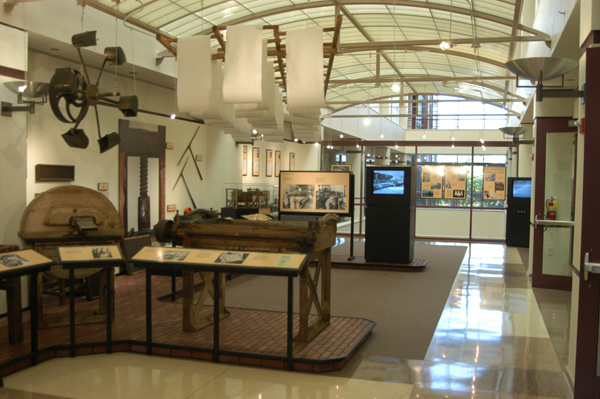 Greetings from the annual Friends of Dard Hunter conference at Georgia Tech in Atlanta. We are 400 handmade paper makers, professors, book and fiber artists, conservators, tool makers, scientists, historians, students and enthusiasts spending several days completely immersed in what we love: sharing, learning about, and celebrating handmade paper in all of its extraordinary forms.
Greetings from the annual Friends of Dard Hunter conference at Georgia Tech in Atlanta. We are 400 handmade paper makers, professors, book and fiber artists, conservators, tool makers, scientists, historians, students and enthusiasts spending several days completely immersed in what we love: sharing, learning about, and celebrating handmade paper in all of its extraordinary forms.
 Sukey Hughes, a pioneer in documenting the tradition of handmade paper in Japan, started us off with her thoughtful keynote. Her message to slow down and be mindful in our work really struck home, as I remind myself hourly to do one thing at a time these days. The gracious response from the Consul General of Japan Takuji Hanatani to acknowledge the Friends' first international show in Tokyo was touching - I’m struck by the mutual fascination of the Americans and Japanese with each other’s work in hand paper-making. We’ve come full circle with the Friends’ first overseas exhibit in Japan, where the Japanese are now discovering an American who dedicated his life to bringing hand papermaking to the US.
Sukey Hughes, a pioneer in documenting the tradition of handmade paper in Japan, started us off with her thoughtful keynote. Her message to slow down and be mindful in our work really struck home, as I remind myself hourly to do one thing at a time these days. The gracious response from the Consul General of Japan Takuji Hanatani to acknowledge the Friends' first international show in Tokyo was touching - I’m struck by the mutual fascination of the Americans and Japanese with each other’s work in hand paper-making. We’ve come full circle with the Friends’ first overseas exhibit in Japan, where the Japanese are now discovering an American who dedicated his life to bringing hand papermaking to the US.
Other talks and workshops were thought provoking and useful. From the practical and technical to the sublime and inspiring, there was a nice range of content:
It wouldn’t be a papermakers’ conference without getting our hands into vats, which we did with the Combat Paper Project, U. of Alabama’s banana fiber papermaking demo, and Helen Hiebert’s amazing shrinking abaca. This is the second time I've seen the work from the Combat Paper Project, now reaching worldwide. Mindfulness served me well, as I snipped a veteran's uniform into pieces and reflected on the person who wore it.
Worth the price of admission, I got great tips from Pat Feeney and Larry Murrell on how to prevent the Arches black cover stock for our Moving Parts companion booklet from cracking, plus a promising source for archival insert material for the collector’s box. My growing interest in using paper to construct sculptural paper garments was fueled by Erica Rasmussen’s survey of the history of paper garments worldwide, highlighting women’s groovy pop art paper shifts from the 1960s.
Sustainable papermaking was a hot topic. Enthusiasm ran high for the “Slow Paper Movement” coined by Mary Tasillo. A panel of sustainable practice papermakers shared their approaches, including: Mary’s Welcome House ‘zine project; Patterson Clark’s recipes, paper, ink, prints, and carved wood blocks from invasive plants such as white mulberry and multiflora roses; and Zina Castanuella who, in collaboration with Andrea Peterson at Hook Pottery Paper, is making gorgeously pigmented native plant papers from Queen Anne’s lace, day lily, dandelion, oats, abaca and seed inclusions from their papermaker’s garden.
The opening for Make an Impression was packed. Do more seasoned artists grow blasé about seeing their work on exhibit? Being able to attend my first opening was a thrill. Sharing the spotlight with so many inspiring artists and witnessing, first-hand, the response to my own work was a deeply fulfilling first for me.
This morning, I topped off my already overrunning cup with the Paper Runway exhibit at Atlanta’s Hartsfield-Jackson airport. After meeting many of the exhibitors at the conference, their work was all the more meaningful to see on display. Pieces that inspired me included Erica Rasmussen’s Juju Dress, Jacket Pilosic, and Collar #6: Book of Desires, Mary Ellen Matthews’ Wings for Icarus, Robert Ryan’s Every Beat of My Heart, Julie McLaughin and Mary Snyder Behrens’ Arianne and Isis, Kristen Demer’s Strictly Unconfined, Liz Mitchell’s Worn Slippers, and Jill Powers’ Kozo Fiber Shoes.
So now the question is, do I dare to Dard? It’s President Jill Littleton’s call to action for all members to get involved. She has a number of innovative ideas, many leveraging social media tools to bring fresh blood into the membership. Kudos to her for this vision. I’ve struggled with how involved to get, frankly. My early impressions of this organization were that, while full of interesting, creative and nice people, it felt dated and out of touch. I’m encouraged and motivated by the fresh ideas and energy I felt at this meeting.
The organization is hungry for innovative ways to reach out and engage both members and the public. This is my expertise – the question is, is this a place to invest my time? The fact that nobody gives me a blank stare here when I tell them I'm a book artist is lovely, but there are many organizations where this would be true – IAPMA, Guild of Papermakers, Guild of Book Workers, and CBAA to name a few. I haven’t vetted any of them, yet the Friends draws me back. There’s something to be said of spending time in the company of the generous, creative and intelligent people driven to sustain this beautiful craft.